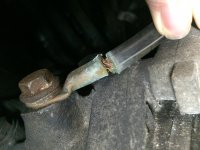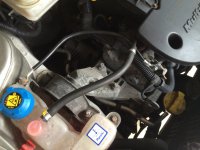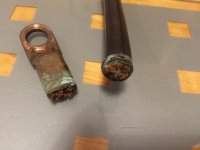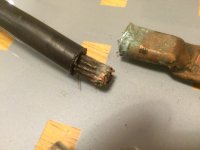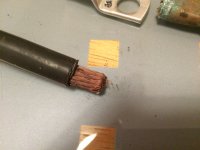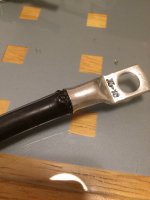I'm sorry, it's apparently rude to talk about a subject I know.
Adhesive heatshrink isn't suitable for sealing a cable termination against the elements? Last I checked that's what it's for. Of course, if you know better, or simply explain here.
And yes, I assumed bathroom sealant, like any other random user would, seeing as you didn't specify. So I clarified that normal sealant is not suitable.
Oh, get over yourself, please. That's really not necessary or a good attitude to have. I did not come here criticising you, I came here with my own advice and a little clarification. You clearly seem determined to take it as a personal attack and an opportunity to assert your superiority.
A few points to address I can't be bothered to multi quote you but here goes.
You might know some bits about electronics, but there is more to electronics than wire A connects to pin B, and as this is a single wire and a connector this is all about the engineering principals, so heat management, stress loading, environment etc.
This part is connected to a hot gearbox, in a forward facing plain exposed to sudden changes in temperature, huge amounts of moisture and exposure to chemicals including battery acid and diesel from directly above. Under these extremes it's likely the adhesive in any adhesive heat shrink would fracture and fail within a few days. So the object of the exercise is to displace any moisture or chemicals which will degrade the materials we're trying to protect. So I have an insulated copper cable, and a nickel plated ring connector, fiat decided to just crimp one on the other and that's why it keeps failing. So I have a suitable silicon which will when heated in the heat shrink displace any moisture and seal all the surfaces it contacts from the elements. Is resistant to petrochemicals and acids and can handle heat shock from +250degreesC down to -50degreesC that should be more than enough so it will coat and protect the copper fill any air spaces in the joint and act as an adhesive between the insulation of the cable and the heat shrink I am going to use. It is also more flexible than the glue used in heat shrink and not limited to a very thin coating.
This is a pretty common technique used to protect components that might come into contact with liquid chemicals and moisture. And is often used to protect Hall effect chips in clamp meters.
I can see that any non electronics person might assume I meant something like bathroom sealant, but you (I assume) knew other such sealants existed but rather than ask me what I was doing/using you gave me a lecture on why I couldn't use 'Normal silicon' not that in this application it would be a major issue, in essence the tiny amount of acetic acid produced during the cure isn't going to do much harm to a large single core cable and will not do any lasting damage.
Finally as for "I came here with my own advice and a little clarification." I didn't ask for advice or clarification, though I appreciate this is a forum and on forums people do, do that but as you only ever turn up to preach on electronics subjects and often to "assert" your superiority in such matters, I took it that that was your intention this time, and to be perfectly honest I don't need it, much like a mechanic doesn't need me telling them how to change a wheel and might react similarly.
Take it the 2nd cable is one of the Halfords premade ones?
I'd like to avoid been near plastic, would the terminal fit on the body side of the engine mount?
Ziggy
The second cable was an off the shelf pre made solenoid cable from the small car parts store in town, it was fitted very quickly in the cold so may at some point go under the washer bottle with suitable washer but I bought a much better cable from the auto-electrical specialists I visited later on in Norwich
